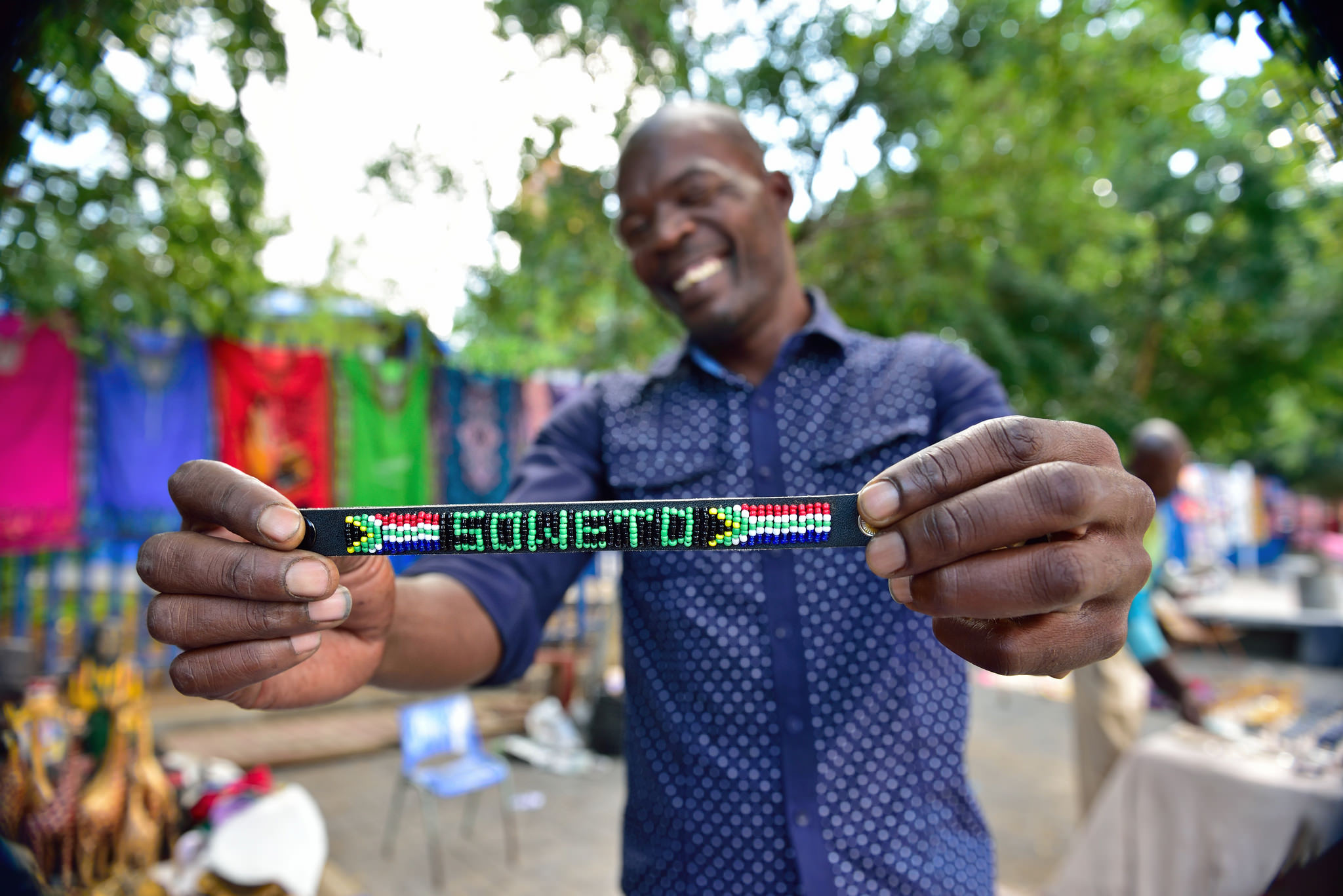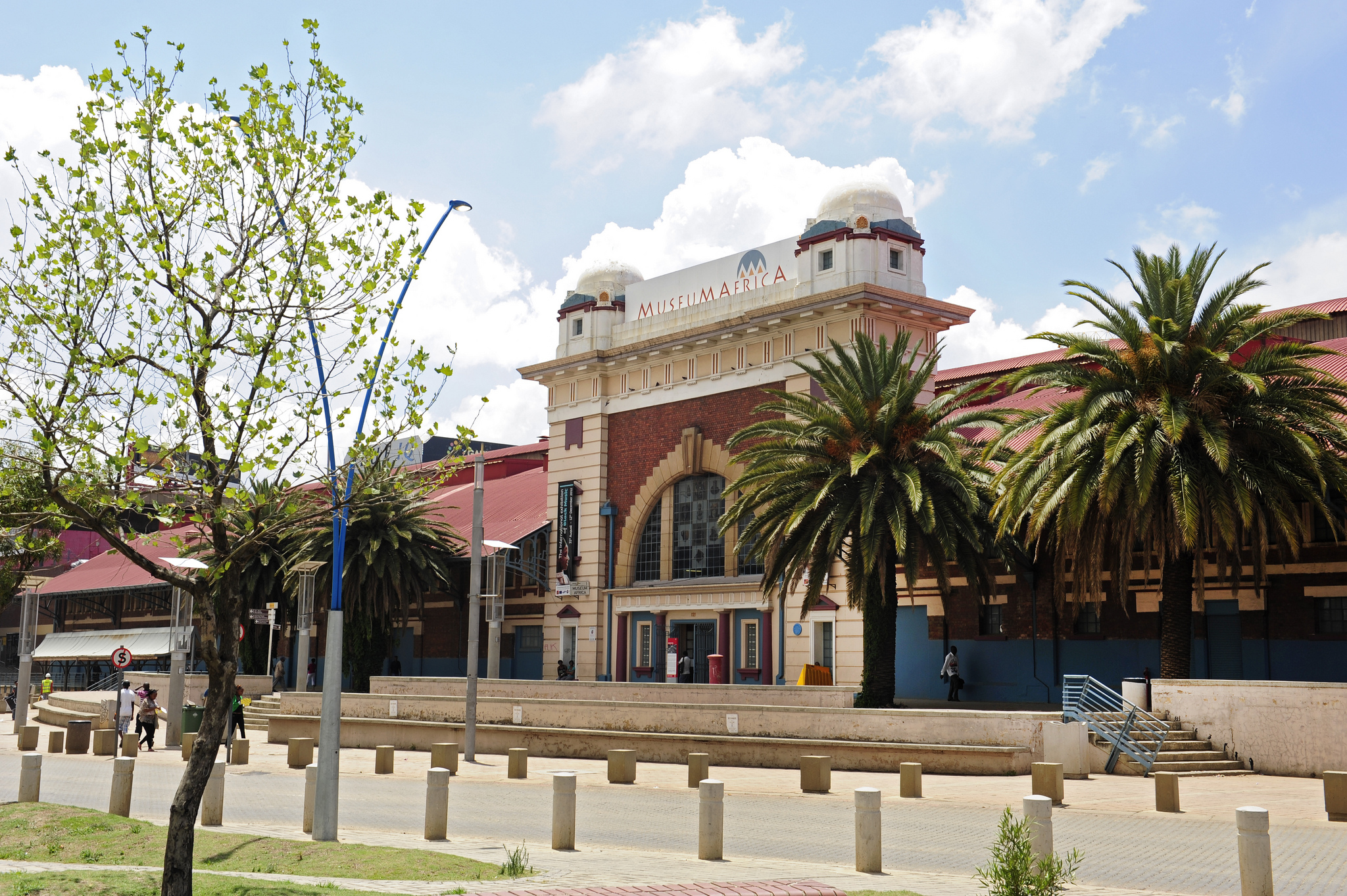Johannesburg, South Africa’s megacity
Johannesburg is the disc of sky you see as you crane your neck up, standing in the core of the iconic Ponte Tower. Johannesburg is also gritty, grimy and fizzing with energy. And like Ponte, the tube of concrete that dominates the city’s skyline, Joburg is making a comeback. It is shedding its reputation as a wild and unfriendly frontier town to become the most cosmopolitan of African cities.
Jozi is a city reborn. The city’s chefs are creative, the many bars are welcoming and hipster hotels are helping to reclaim once-blighted inner-city neighbourhoods. Music is created, theatre thrives and real lions roam just beyond the city’s borders.
The other Lions, eGoli’s own rugby team, have taught its denizens to roar again. Or choose the colour, history and neighbourly rivalry of a Soweto Derby between historic football clubs Orlando Pirates and Kaizer Chiefs.

A street trader sells crafts to tourists in Vilikazi Street in Soweto. (Image: South African Tourism)
While you’re in Soweto, get on a bike tour: nothing beats getting to know the city at street level. New friends may invite you into their homes – be they humble shacks or comfortable mansions – and offer you traditional beer. South Africa’s largest township is filled with flamboyant story tellers with intriguing histories.
Everywhere you look in Johannesburg, artists are working, businesses are creating wealth and people of many nations are remaking it into a truly African city. You can enjoy a traditional Ethiopian meal in Little Addis or taste small-batch craft beer in the Maboneng Precinct. Rejuvenated Braamfontein is a foodie mecca on a Saturday when it hosts the Neighbourgoods Market. On Sundays the chic head to Market On Main to feed their evolving tastes.

Neighbourgoods Market in the Braamfontein precinct of Johannesburg’s inner city is a foodie mecca on a Saturday morning. (Image: South African Tourism)
Jozi is growing. New suburbs and their shiny malls abound. But the city is still home to old historic neighbourhoods like Melville. Here shops, restaurants and bars in street level Victorian buildings and an arty population draw crowds of tourists and bohemian locals.
Underneath its brash new exterior, the grand dame that the city was still exists. Its colonial history is there to be found if you take one of the many walking tours. Johannesburg is an urban forest. Johannesburg is home to the largest assemblage of Art Deco architecture in Africa.

Museum Africa in Newtown (despite its name, one of the oldest areas of Johannesburg) is an example of the city’s old colonial architecture. (Image: South African Tourism)
Randlord gold and need for prestige saw the city invest in world-class art to mount on the walls of the Johannesburg Art Gallery. Opened in 1915, it houses the city’s collection of both European and African masterpieces. Works by Rodin, Monet and Picasso hang next to work by just as talented South African artists.
Constitution Hill, built in 2004 around what was the Old Fort prison (Mandela and Ghandi were jailed there), is home to the country’s Constitutional Court. Stroll around the sun-dappled building or visit the cells or installations for a history lesson on South Africa’s path to democracy.
The entrepreneurial and artistic spirit that built old Johannesburg is helping remake it. New temptations grow, flourish and die, to be replaced by new attractions. There is always something new to find. Or something old to be rediscovered, in this ever-changing extrovert of a city.

Jozi hipsters make music on the street in Braamfontein. (Image: South African Tourism)
TOP IMAGE: The Johannesburg city skyline at night, with Ponte Towers at left and the Hillbrow Tower at right. (Image: South African Tourism)


